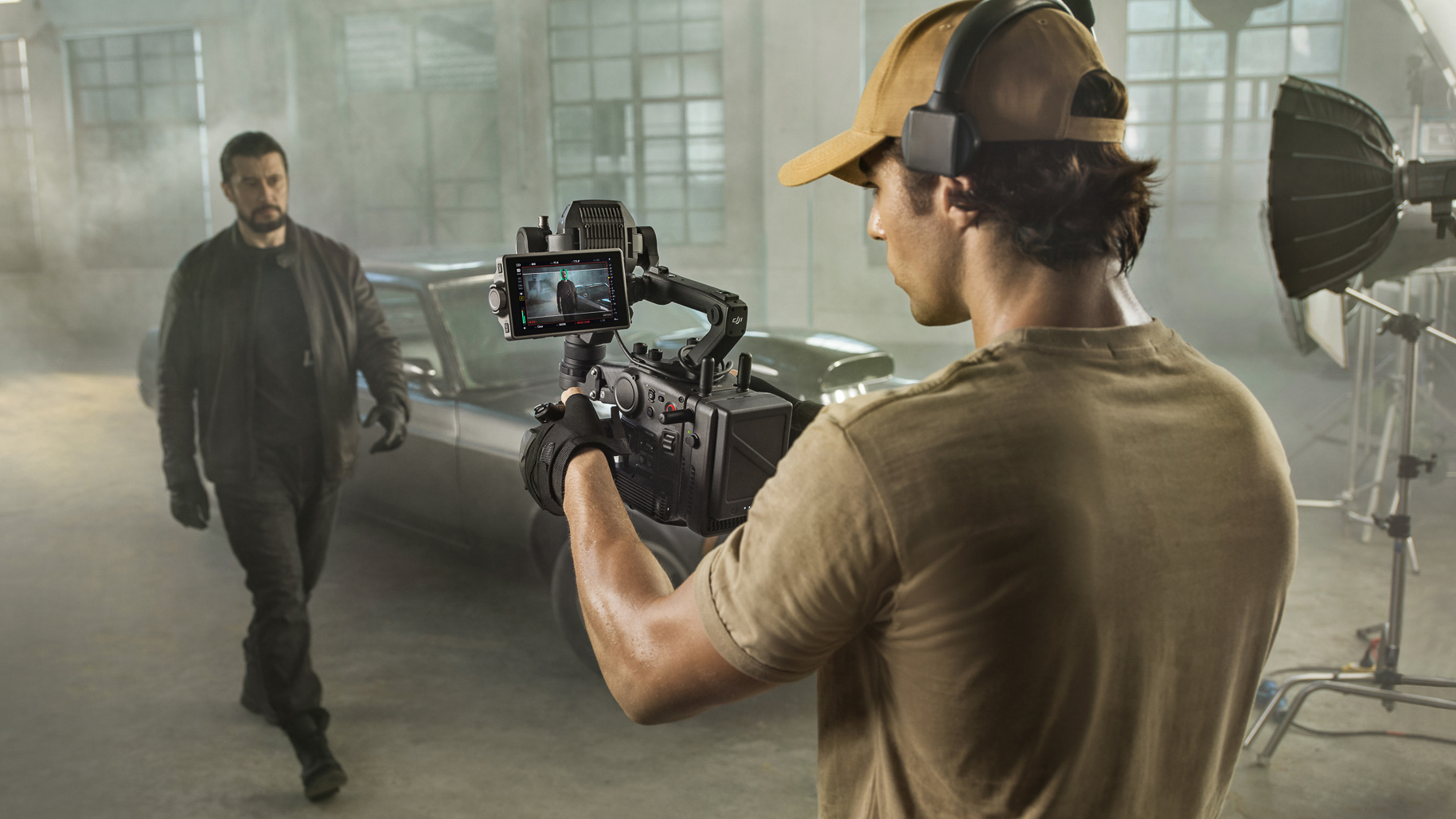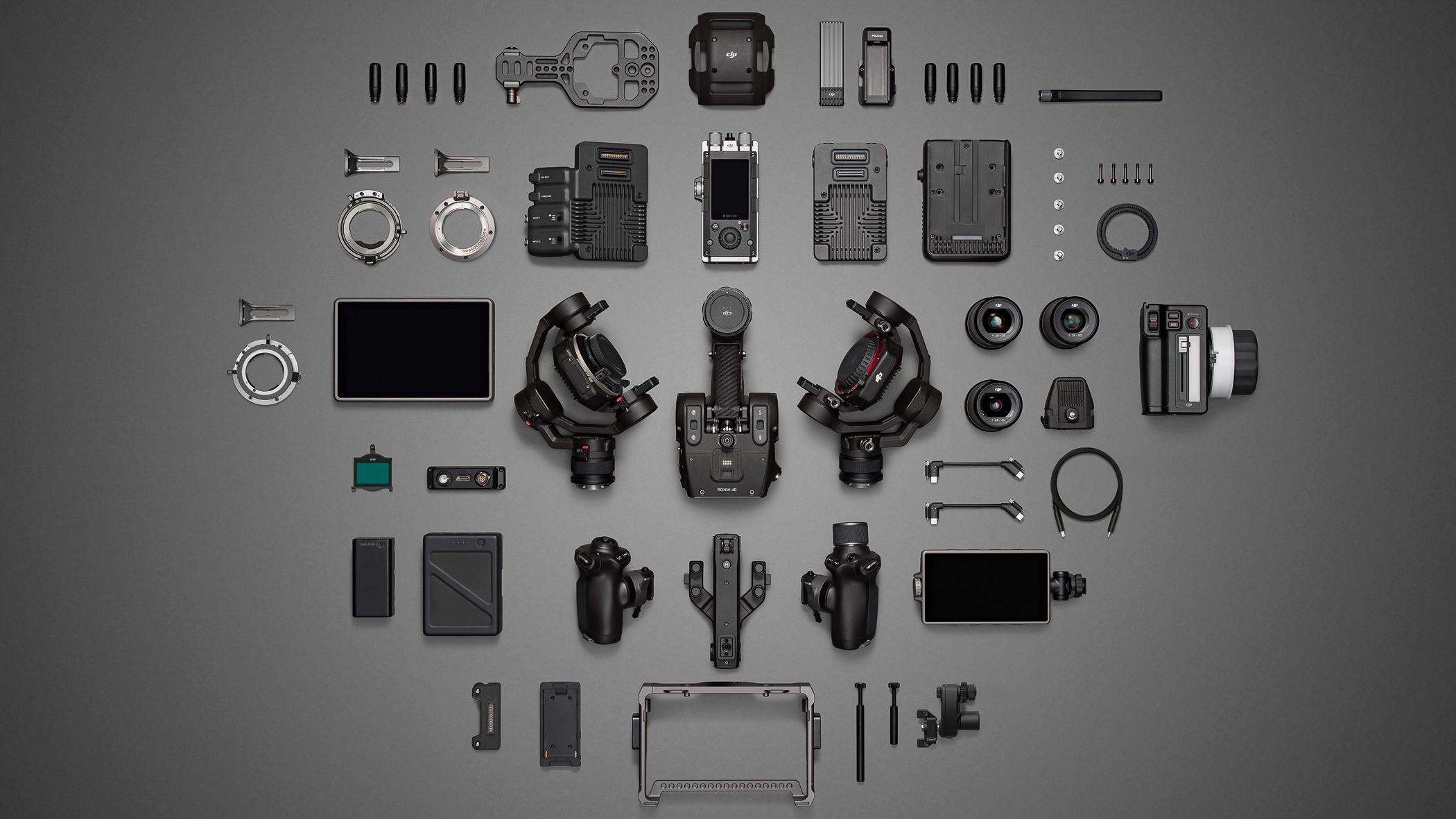DJI takes aim at the dolly with the Ronin 4D 8K cinema camera
DJI opens its season of product launches with a new 4-axis stabilized cinema camera – available in 6K & 8K options

Launching alongside 2 new versions of its Zenmuse gimbal camera, the DJI Ronin 4D is the industry’s first cinema camera with 4-axis stabilization, adding active Z-axis control. The camera operator’s footsteps should be completely absorbed as they walk, run and shift direction even or stairs or uneven ground, which DJI says “even captures wide sliding shots easily without the need for a dolly.”
The company is not shy about its ambition for this technology, which it has co-developed with eight industry figures including three Academy Award winners for cinematography.
DJI says “we use the power of technology to make cinema-standard production more affordable.” Their launch presentation references significant inventions which made cinematography more accessible; the CCD, Steadicam, autofocus. What makes the Ronin 4D next in line?

In many ways, the Ronin 4D is a pro camera drone that doesn’t fly; it takes input from downward-facing ToF (distance) and forward and backward visual sensors as well as IMU and barometer (altitude) sensors – a very similar list to one of DJI’s drones. The system is also powered by a TB50 battery, as seen in DJI drones and the Ronin 2 (that keeps the weight below most pro setups with standard 3-axis stabilizing). The 4D also features video transmission and remote control and subjects can be tracked using ‘ActiveTrack Pro’ – a variant of the AI tracking tech first seen in the Phantom 4 drone.
Focus operators are offered three modes – manual, auto and a hybrid ‘Automated Manual Focus’ which keeps focus on the subject and turns the focus wheel with a motor, allowing the operator to intervene occasionally if they choose using a new LiDAR Range Finder. The distance measuring principle is the same as on the iPhone Pro, but the range is up to 10m in which autofocus isn’t at all dependent on light and contrast thanks to the detachable 43,200-point sensor.
Ronin 4D: Key specifications

Body: 235 x 115 x 160 mm
Overall dimensions: 309 x 290 x 277 mm (6K combo with camera)
Get the Digital Camera World Newsletter
The best camera deals, reviews, product advice, and unmissable photography news, direct to your inbox!
Gimbal weight: 1.04kg
Body weight: 1.45 kg
Overall weight: 4.67kg
Max operating time: 150 minutes
Connectors: 3.5mm TRS stereo in, 3.5mm stereo out, USB-C 3.1, 6-pin 1B DC-in, Battery mount, monitor port, hand grip port x 2, top handle port, HDMI A
X9 connectors: LiDAR Range Finder, Focus motor x 2
Accepted media: DJI Pro SSD, CFexpress 2 type B, USB-C SSD
Customers can buy the Ronin 4D with either of the new Zenmuse X9 cameras, both full-frame and both capable of shooting Apple ProRes and ProRes RAW (as well as H.264).
The choice is between the £9,499 / AU$16,399 Zenmuse X9 8K (which can manage 8K@75fps) or the £5,999 / AU$10,699 Zenmuse X9 6K (which maxes out at 6K@60fps or 4K@120fps).
The X9 features a 35mm CMOS, with ISO of 200-12,800 or dual native, 14-stop dynamic range, DJI’s own color system and built-in nine-stop physical ND filters. The base lens mount, DX, can accept short-flange mounts including DJI’s proprietary DL mount, Leica M and E Mount lenses.
The camera includes a new transmission technology, O3 Pro, capable of sending a 1080p/60fps feed to remote operators at up to 6km (20,000ft). O3, incidentally, is what used to be called OcuSync 3 in the drone line, so it’s the same tech used for low-latency live feeds in DJI’s aerial camera line.
The devices will begin shipping in December.
Today’s announcement is just the first of three DJI teased last month. The next will be on 27 October followed by 5 November.
Read more
Best gimbals
Best cinema cameras
Best camera rigs

With over 20 years of expertise as a tech journalist, Adam brings a wealth of knowledge across a vast number of product categories, including timelapse cameras, home security cameras, NVR cameras, photography books, webcams, 3D printers and 3D scanners, borescopes, radar detectors… and, above all, drones.
Adam is our resident expert on all aspects of camera drones and drone photography, from buying guides on the best choices for aerial photographers of all ability levels to the latest rules and regulations on piloting drones.
He is the author of a number of books including The Complete Guide to Drones, The Smart Smart Home Handbook, 101 Tips for DSLR Video and The Drone Pilot's Handbook.
